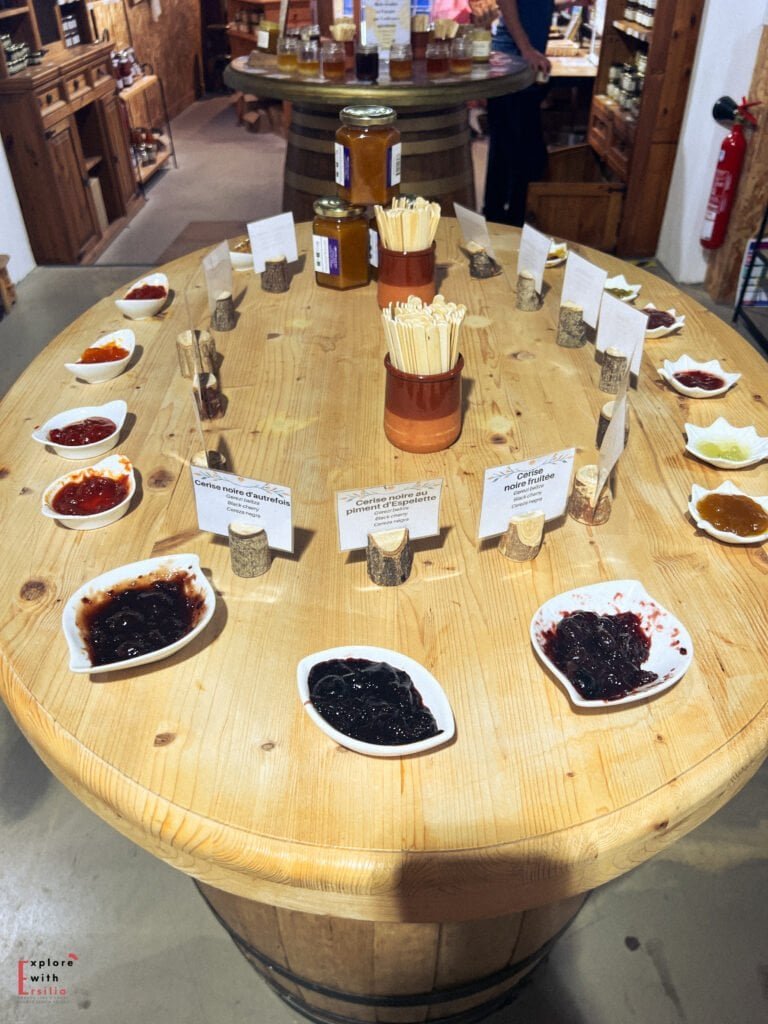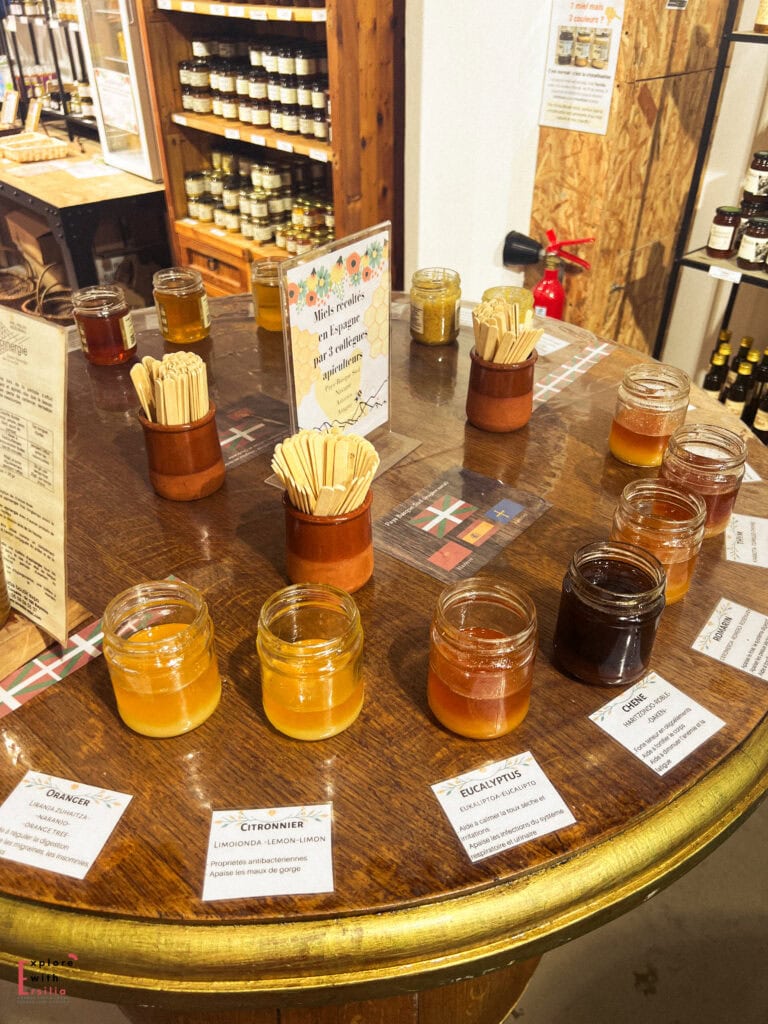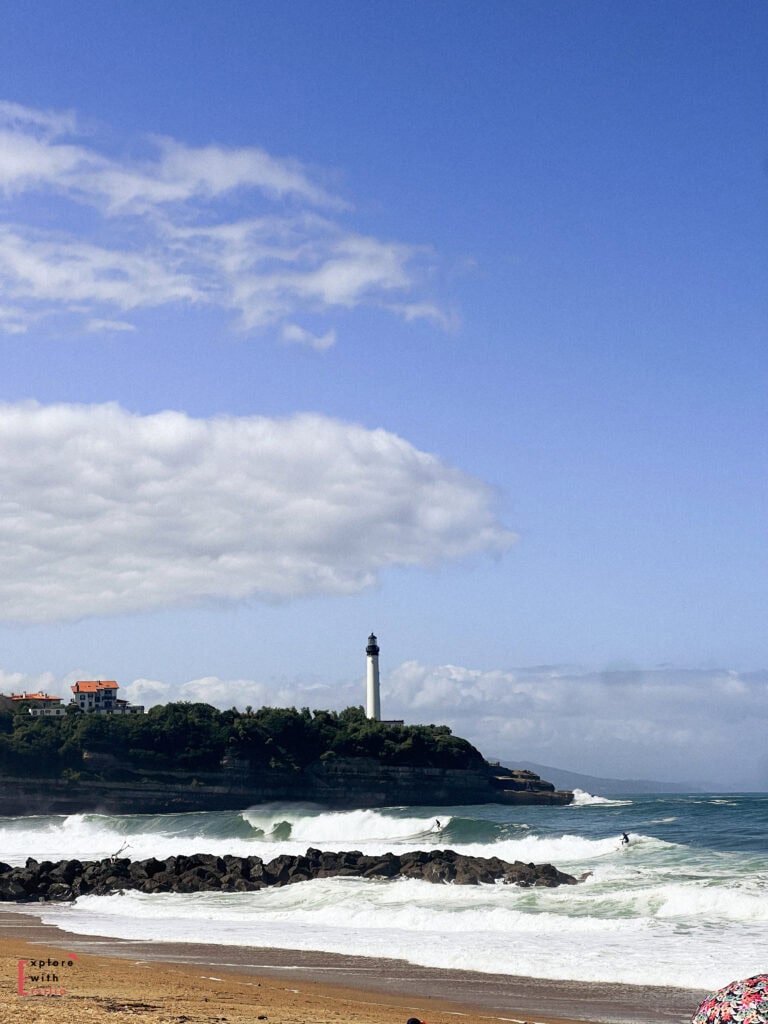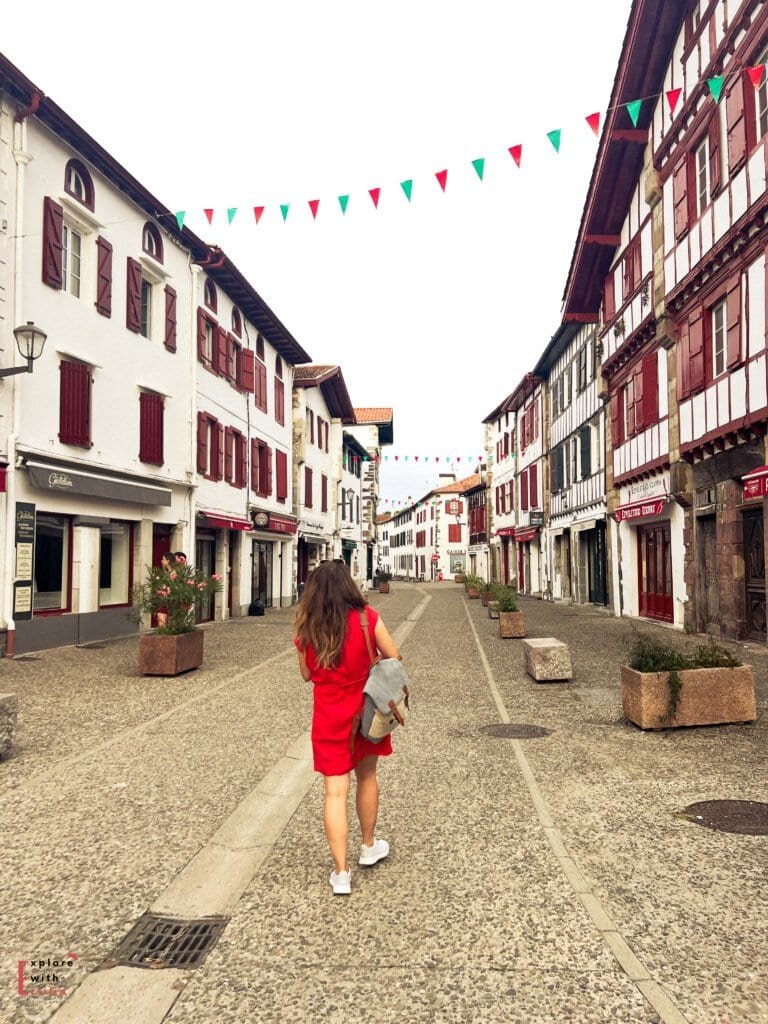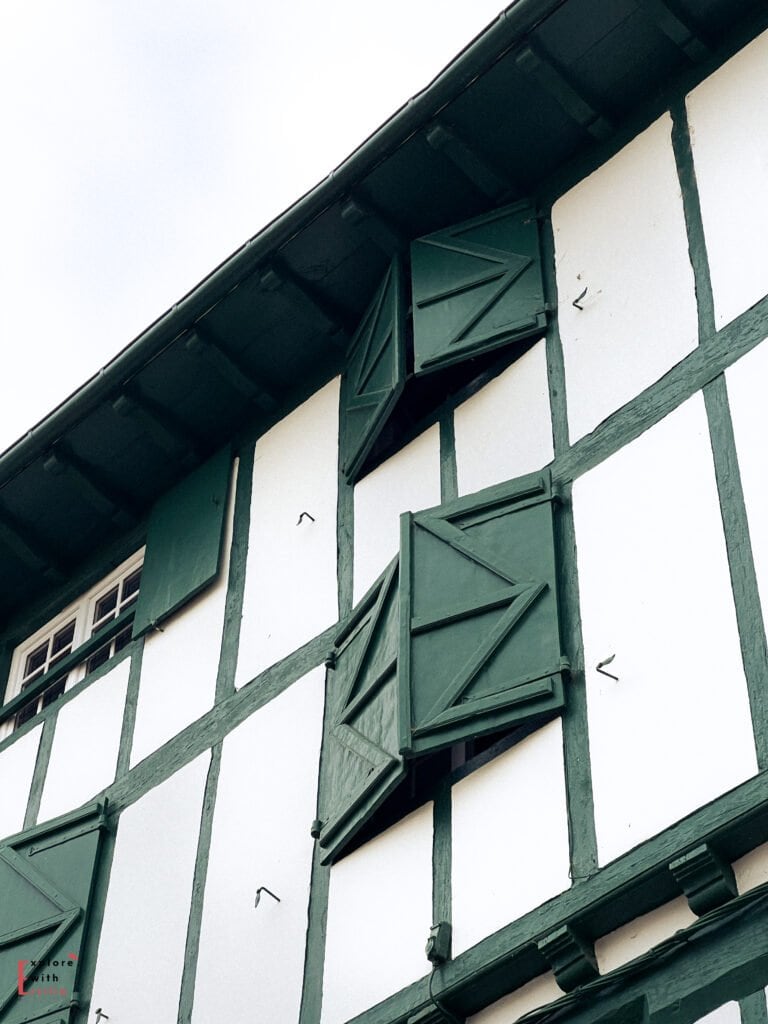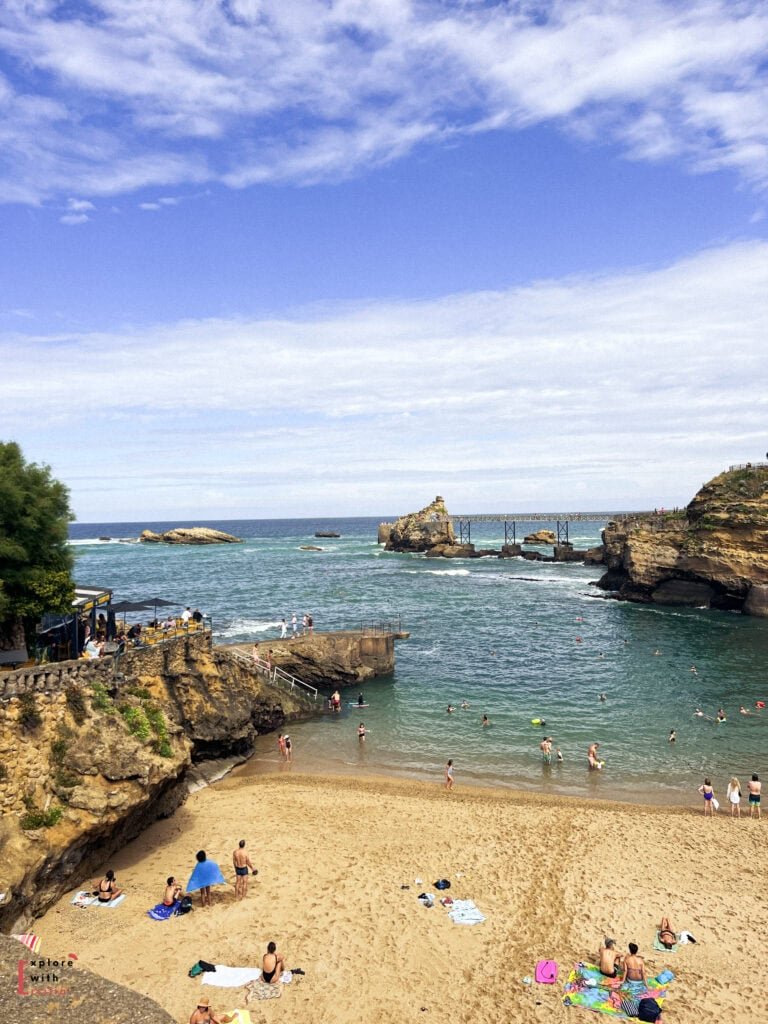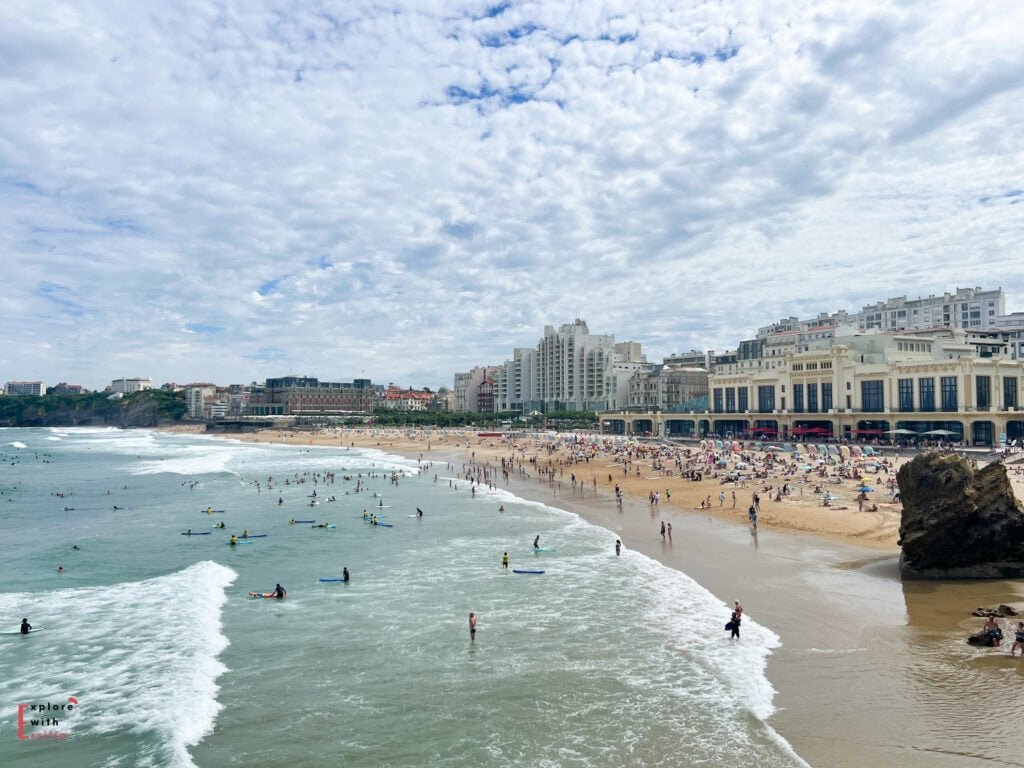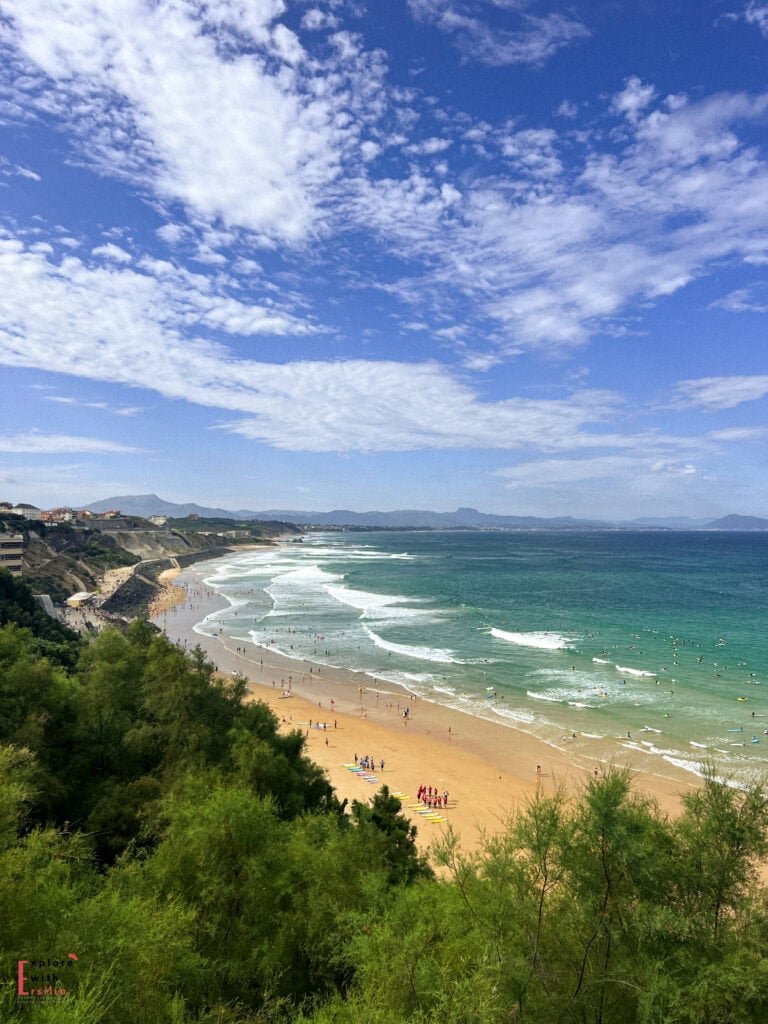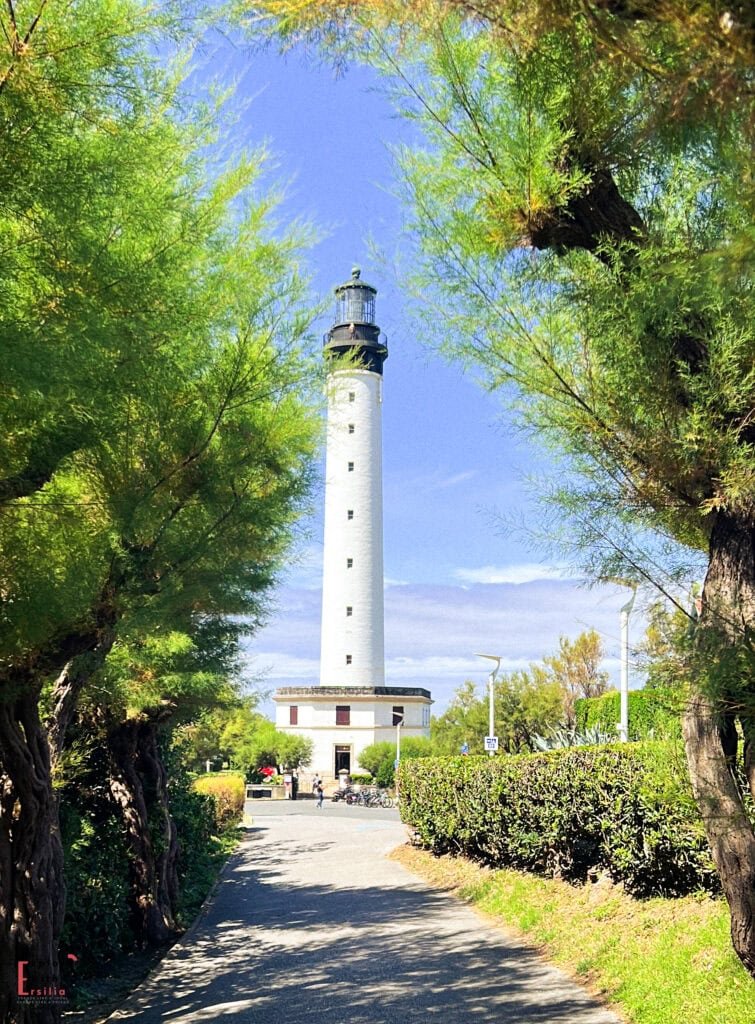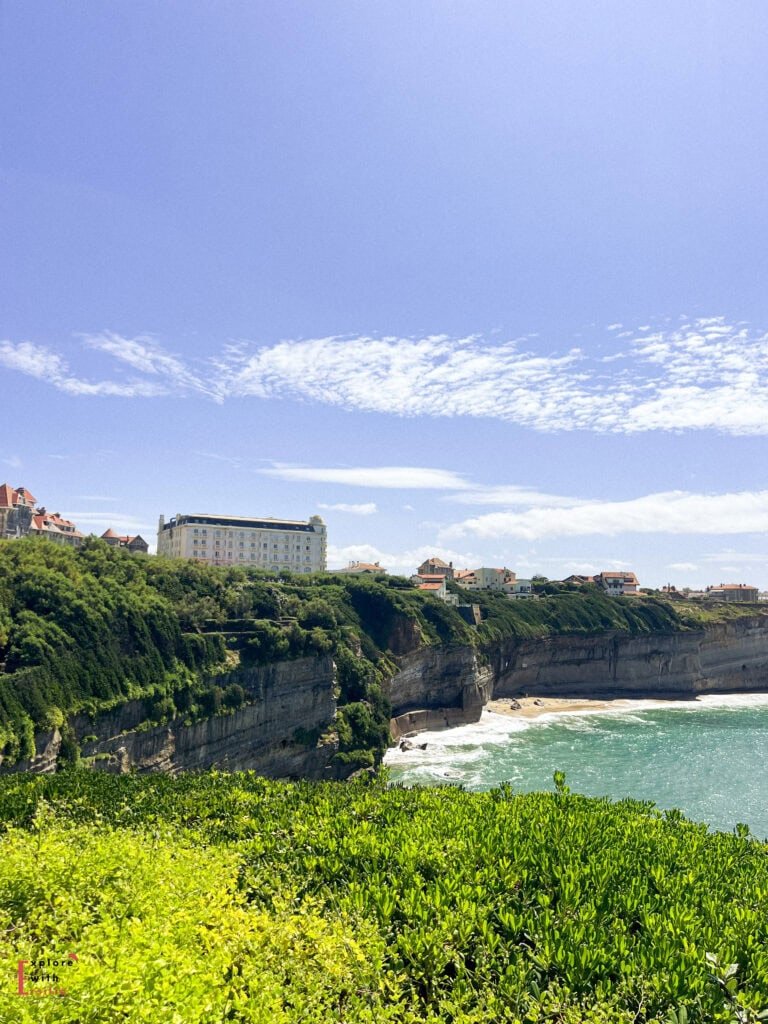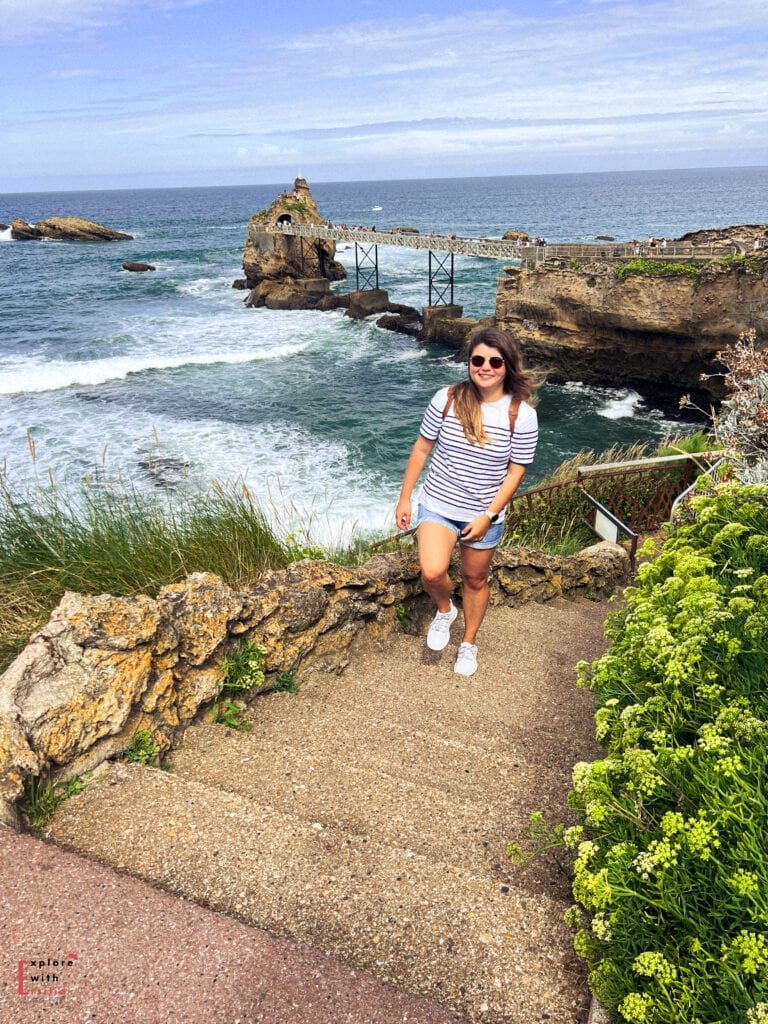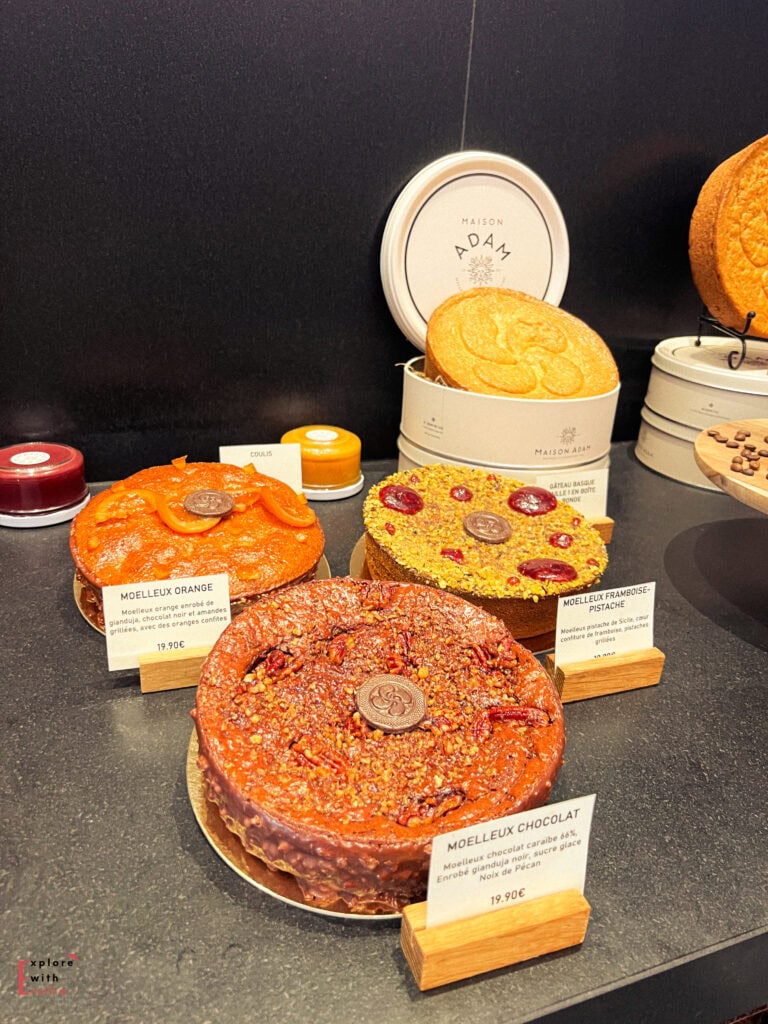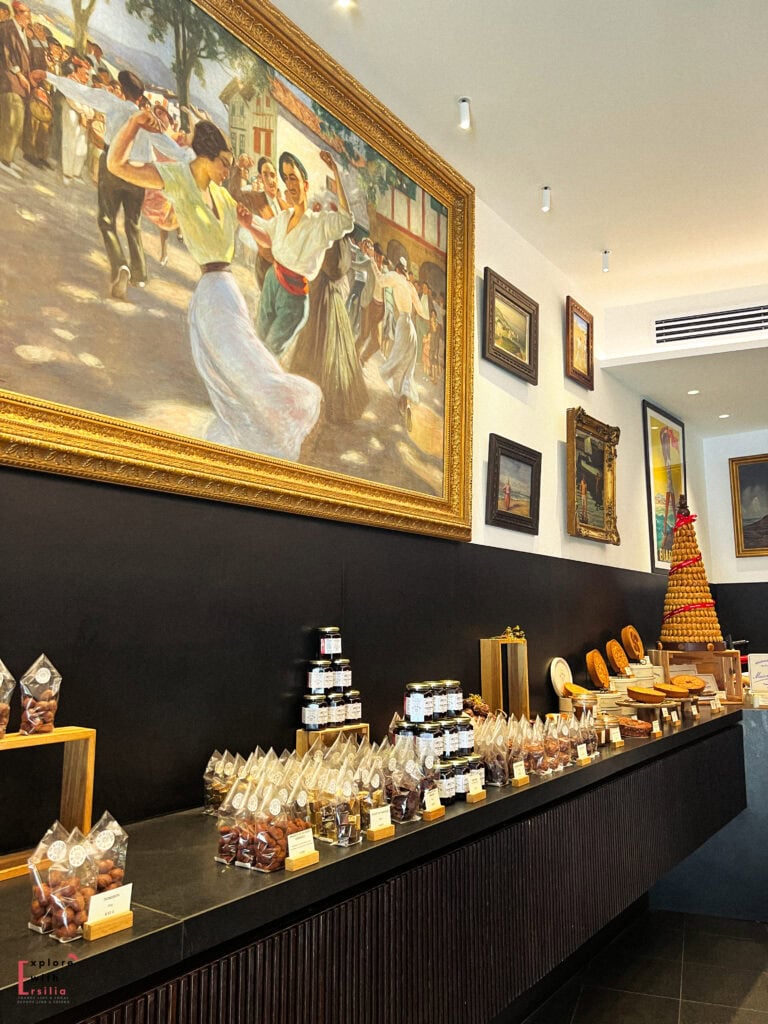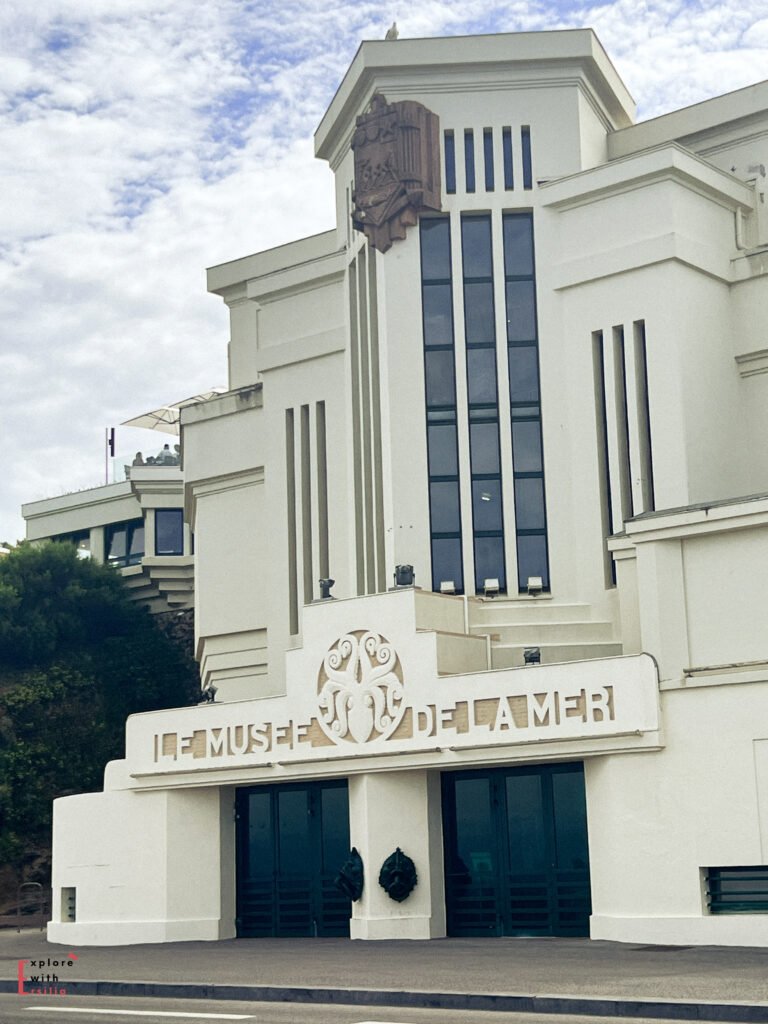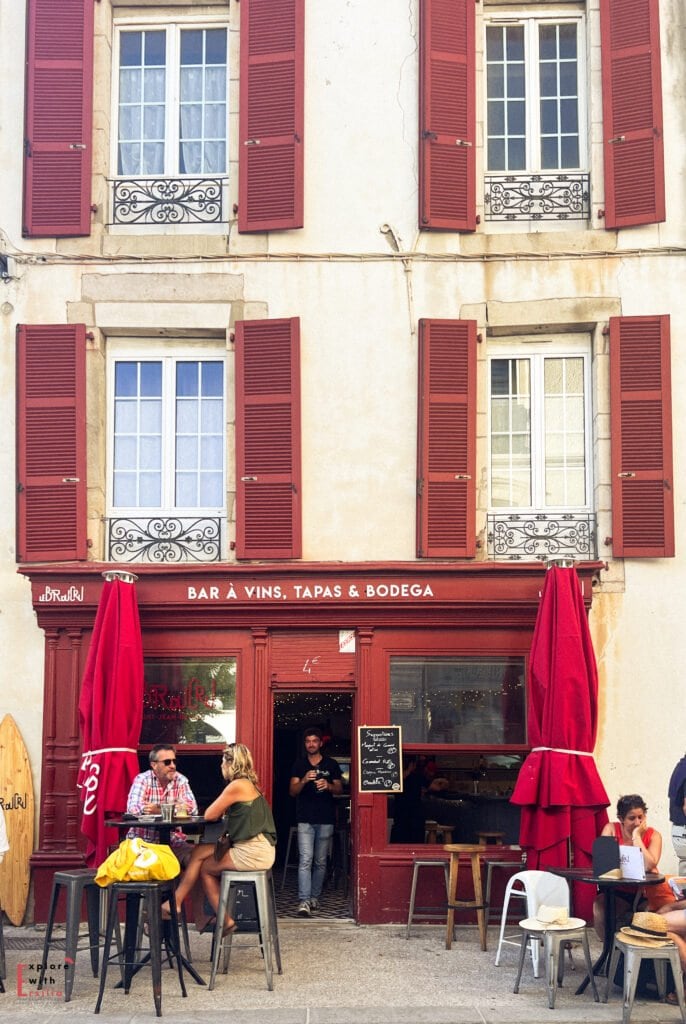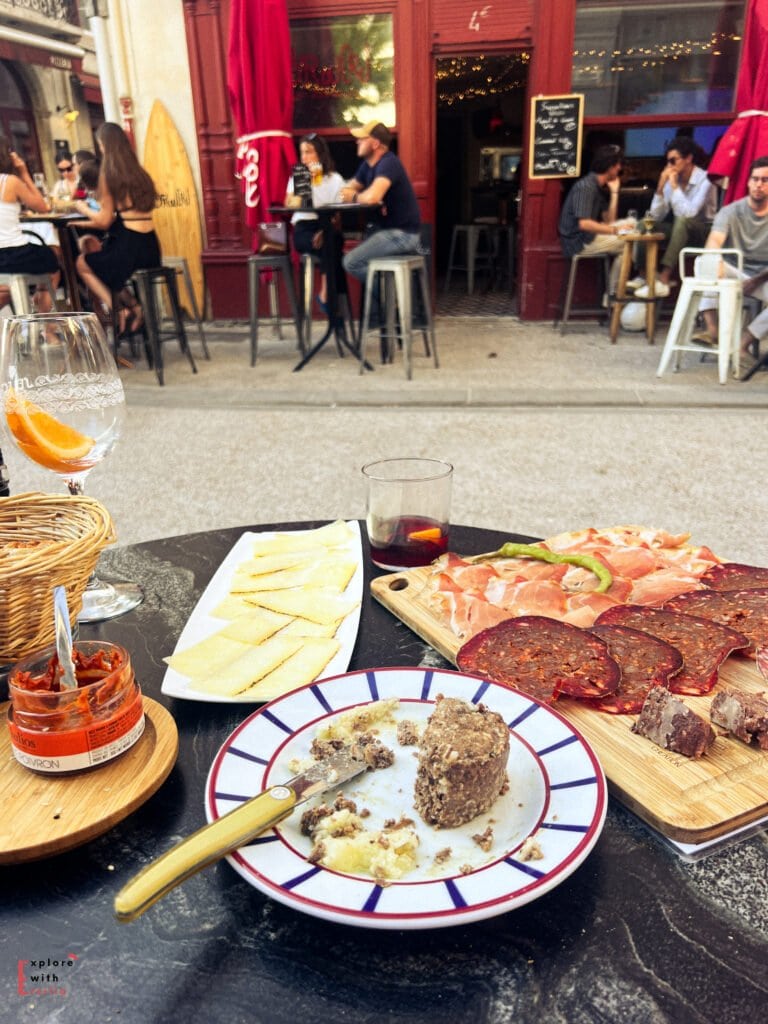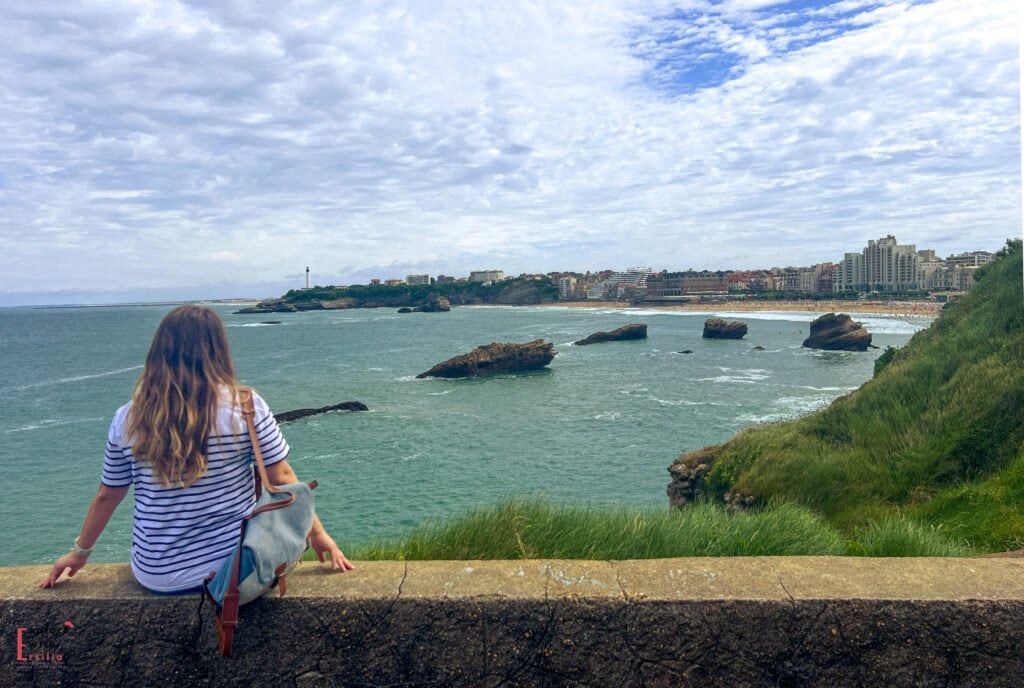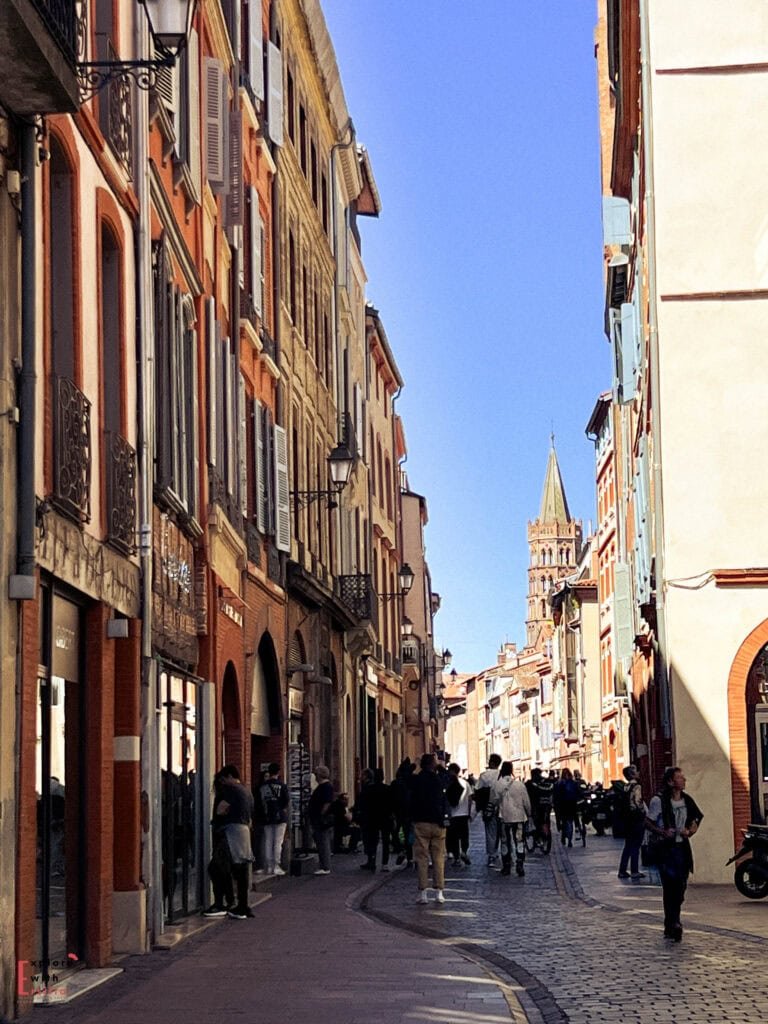Explore with Ersilia contains affiliate links and is a member of the Amazon Services LLC Associates Program. If you make a purchase using one of these links, I may receive compensation at no extra cost to you. affiliate links are how we keep this content free. A huge thanks if you use these as it helps a lot! See the Full Policy for more information.
The French Basque Country occupies a unique position in southwestern France, where the Pyrenees Mountains meet the Atlantic coast. This distinctive region offers an authentic travel experience that combines diverse landscapes, rich cultural traditions, and exceptional cuisine.
In this guide, I’ll share insights from my recent exploration of the area, covering the key destinations that make the Basque Country worth visiting. We’ll start with practical information about getting there, then explore the cultural capital of Bayonne with its historic cathedral and culinary specialties. From there, we’ll discover the charming mountain villages of Espelette, Ainhoa, and Itxassou, each with their own unique character and attractions.
The coastal section includes Biarritz with its elegant architecture and beaches, Saint-Jean-de-Luz’s picturesque fishing port, and Hendaye at the Spanish border. For those interested in venturing beyond the coast, we’ll cover day trips to the Pyrenees Béarnaise region. Throughout, I’ll highlight the exceptional Basque cuisine you’ll encounter and provide practical planning advice for creating your own perfect itinerary.
Whether you’re planning a focused 3-day visit or an extended exploration, this guide aims to help you experience the best of what makes the French Basque Country a rewarding destination for travelers seeking something beyond France’s more familiar regions.
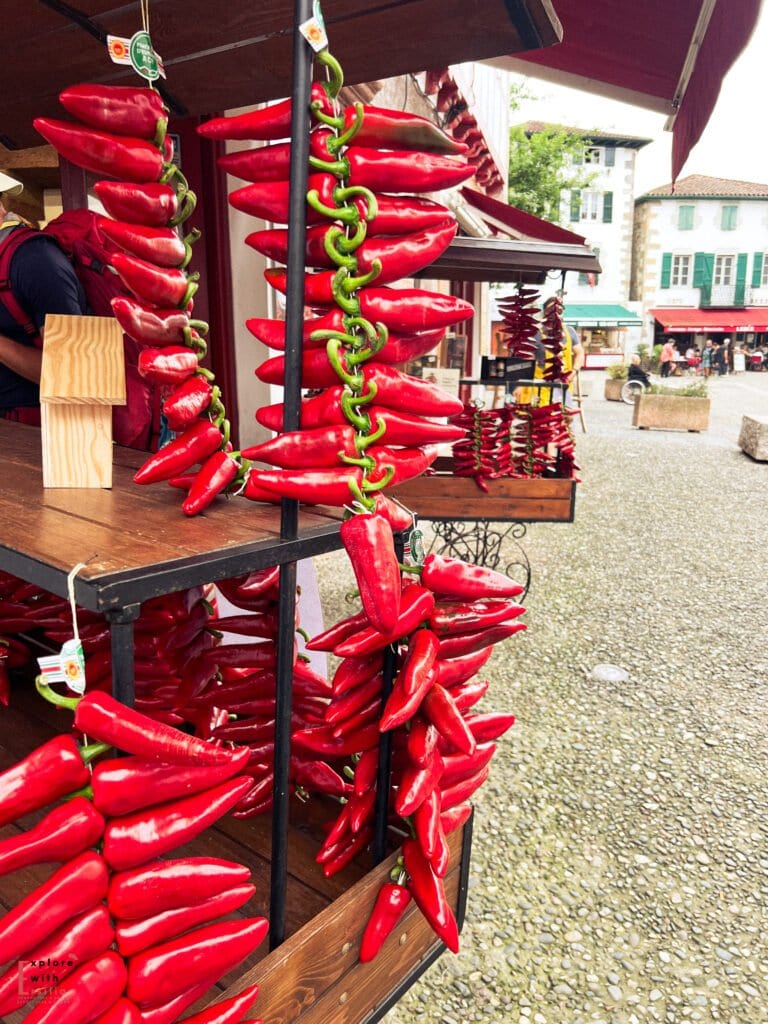
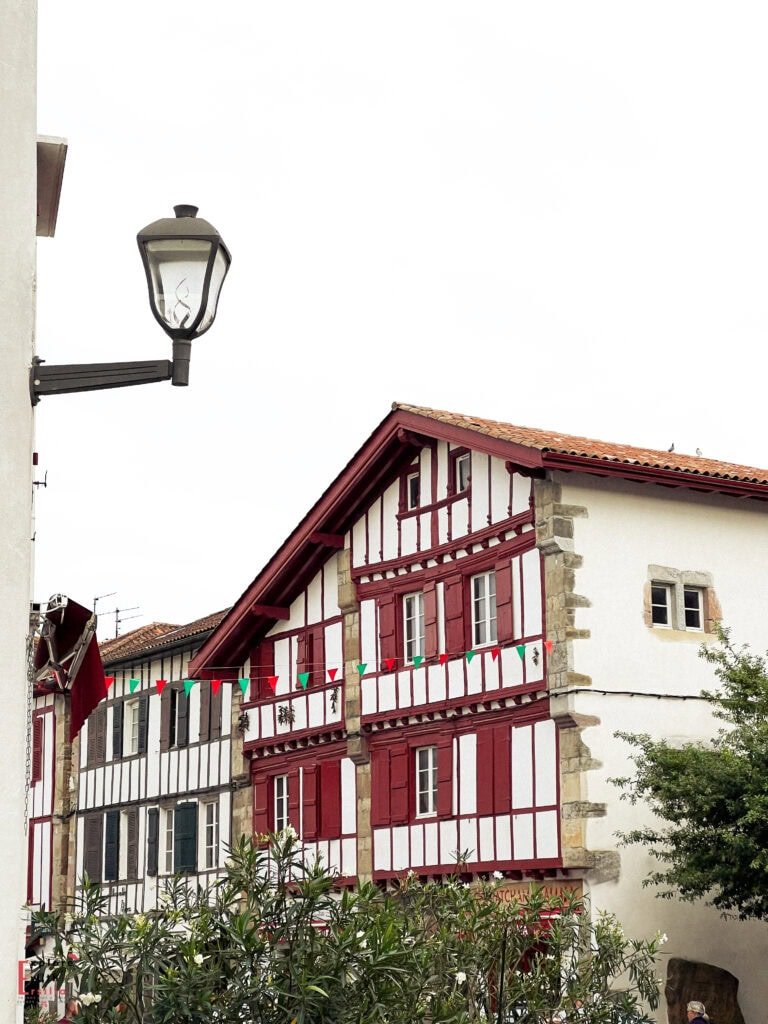
Where Is the French Basque Country & How to Get There
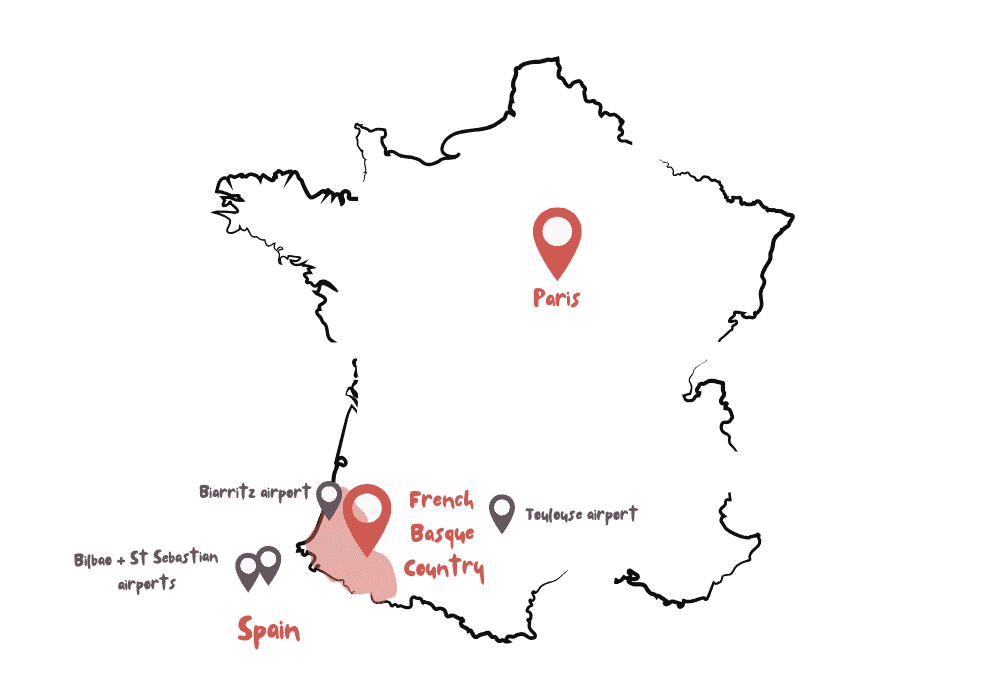
Flying In: Your Gateway to Basque Adventures
When planning my trip, I found three fantastic options for flying in:
Biarritz Airport is your most convenient choice (and my personal favorite). It’s small but perfect, and you’ll literally step off the plane into Basque Country!
Alternatively, flying into Spanish airports can sometimes score you better deals. Bilbao Airport is about 1.5 hours from the French border, while San Sebastian Airport is just 20km away—practically next door!
You can use Omio to compare the flight fares and get a better deal.
Road Tripping & Public Transport
For more flexibility, I recommend renting a car. From Paris, it’s about a 7-8 hour drive down the A10—totally doable in a day, but I’d recommend breaking it up (because why rush?). From Bordeaux? Just a 2-hour drive south on the A63!
Not a fan of driving? The TGV high-speed train from Paris to Bayonne takes just over 4 hours, and from there, you can easily connect to smaller local trains and buses that service Biarritz, Saint-Jean-de-Luz, and other towns.
Car-Free Adventures & Rental Tips
One of my most memorable experiences was exploring the region completely car-free on the “Sans Voiture” 7-day itinerary along the Béarn des Gaves route. This gorgeous journey takes you through medieval villages and along mountain streams by local trains, buses, and cycling paths!
If you do rent a car (recommended for maximum flexibility), book well in advance during summer months and consider a compact car—some mountain village streets are NARROW! I once had to fold in my side mirrors to squeeze through Espelette during market day!
Whichever way you arrive, the moment you spot those distinctive white houses with red and green trim against rolling hills, you’ll know you’ve reached somewhere truly special. The French Basque Country doesn’t give up its secrets easily—and that’s exactly what makes discovering it so rewarding.
Bayonne – The Cultural Capital of the French Basque Country
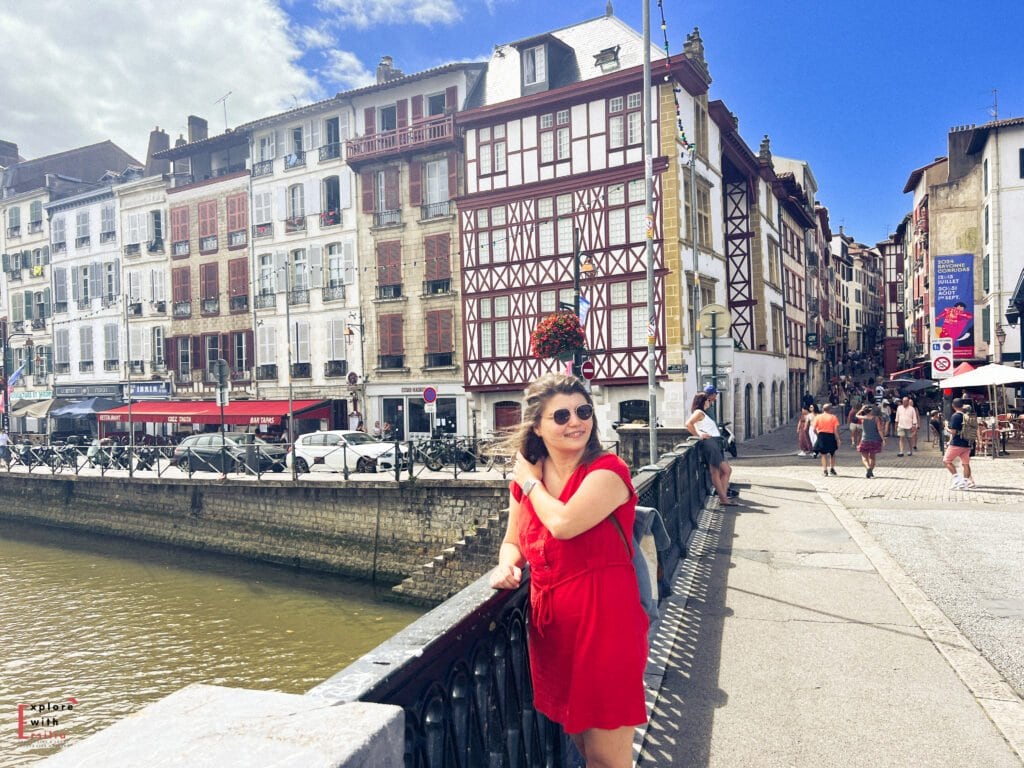
Bayonne was a pleasant surprise on my Basque Country trip. Often overlooked by travelers rushing to Biarritz’s beaches, this riverside city sits at the confluence of the Nive and Adour rivers and serves as the historical gateway to the region. With its half-timbered buildings and colorful shutters, Bayonne has a distinctive atmosphere that deserves proper exploration.

MY TOP HOTEL PICKS
ACTIVITIES I RECOMMEND
Sainte-Marie Cathedral
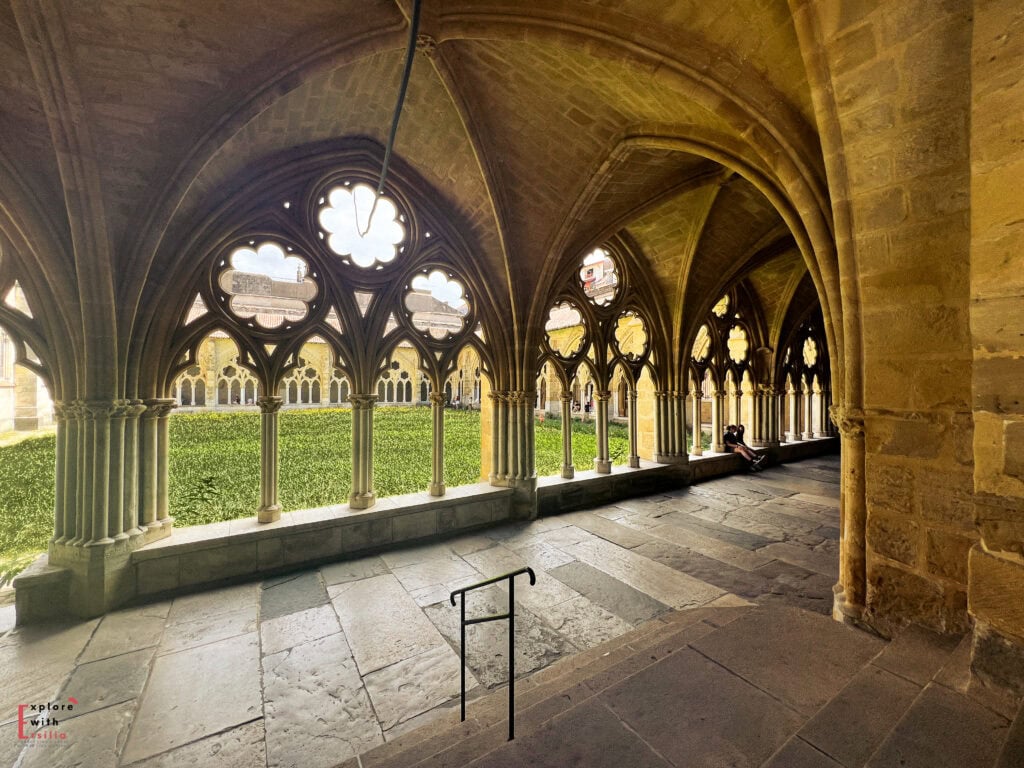
Bayonne’s Cathedral is a 13th-century Gothic structure that dominates the city skyline. The interior is impressive, but the real highlight is the cloister with its peaceful garden courtyard. I spent about an hour here, admiring the intricate stone carvings and watching how the light changed the atmosphere throughout the space.
The Old Castle: Château-Vieux
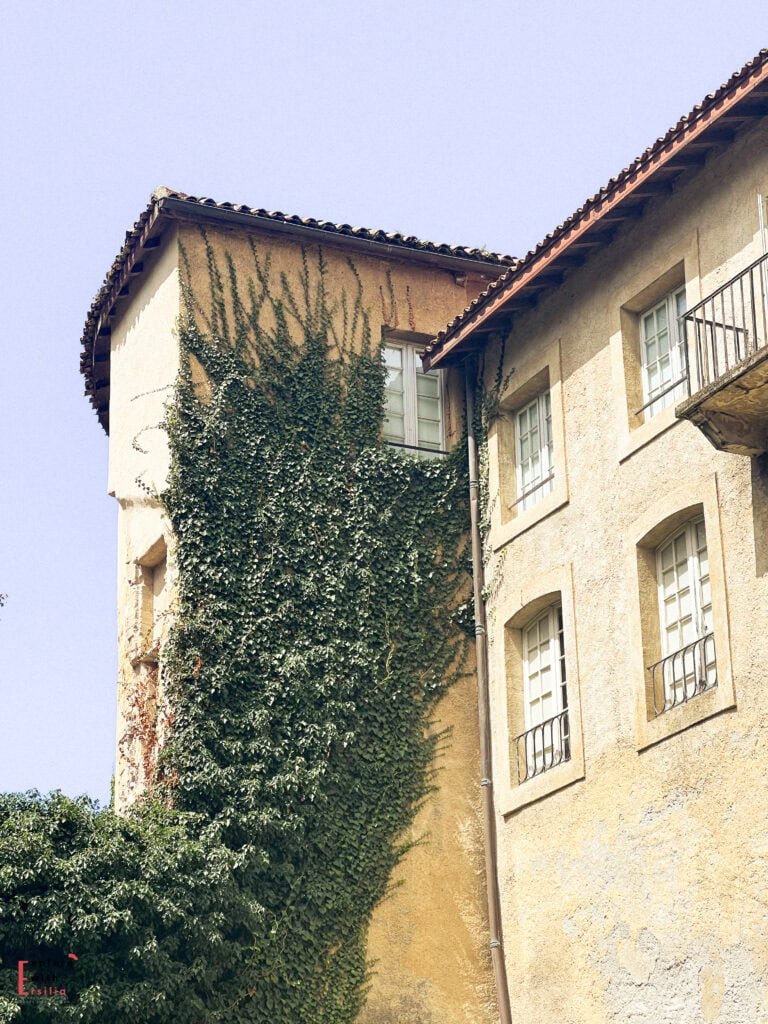
A short walk from the cathedral stands Bayonne’s ancient castle. Built during the English occupation in the 12th century, it now serves as military barracks. While you can’t enter, walking the perimeter provides insight into Bayonne’s strategic importance throughout history.
Loreztia Boutique
My favorite discovery in Bayonne was Loreztia, a boutique on a narrow street in the old town. The shop specializes in handmade marmalades, honey, and artisanal wax candles. The owner offers tastings of their marmalades paired with local sheep cheese – the bitter orange marmalade with Ossau-Iraty cheese was a combination I hadn’t expected to enjoy so much.
What makes this place special is their small exhibition of old artisanal machines used for honey and marmalade production, adding educational value to the shopping experience.
Jambon de Bayonne
Sampling the city’s namesake ham is essential when visiting. I found excellent Jambon de Bayonne at the covered morning market, where vendors were happy to explain that it should be served thinly sliced at room temperature to appreciate its full flavor.
Jambon de Bayonne is a specialty cured ham from the French Basque Country. It’s a salt-cured ham that’s aged for at least seven months and often up to ten months or longer. The ham gets its distinctive flavor from the microclimate of the Adour River basin, where the cool air from the Pyrenees meets the humid Atlantic air. The meat is rubbed with local salt from the Adour estuary, giving it its characteristic taste and making it a protected geographical indication (PGI) product that can only be produced in this specific region.
Corsaires Beach
After exploring the city, I took a short trip to nearby Corsaires Beach. Though swimming wasn’t possible due to strong waves, the views of Biarritz lighthouse in the distance made for a perfect picnic spot.
For the best experience, visit Bayonne in late spring (May-June) when the weather is pleasant but before summer crowds arrive. A two-day stay allows enough time to see the city and make side trips to nearby attractions.
Charming Mountain Villages – Espelette, Ainhoa & Itxassou
After exploring the Basque coast, I headed inland to discover the mountain villages I’d been looking forward to visiting. The distinctive white houses with their red and blue trim create that iconic Basque look you simply can’t find anywhere else.

MY TOP HOTEL PICKS
ACTIVITIES I RECOMMEND
Espelette: The Village I Came For
I specifically planned my Basque Country trip around visiting Espelette, and it didn’t disappoint. This village is famous for its peppers, and they’re literally everywhere – hanging in vibrant red bunches from nearly every white facade in town.
These peppers aren’t just decorative; they’ve earned AOC status (like fine wines) and add a distinctive flavor to Basque cuisine that’s more aromatic than spicy. I visited during the harvest season in October, which turned out to be perfect timing. The annual Pepper Festival was in full swing with local producers selling their products and traditional Basque music playing in the square.
The Saint-Étienne Church is worth stepping inside for its impressive gilded altarpiece, and the former castle of the Barons of Ezpeleta provides some historical context to the village.
Getting here was simple – about 30 minutes from the coast by car.
Ainhoa: An Unexpected Gem
I hadn’t planned to visit Ainhoa but added it to my itinerary after seeing photos, and I’m so glad I did. This village is officially one of “Les Plus Beaux Villages de France,” and with good reason. The main street is lined with identical 17th-century Basque houses – white with red shutters and timber details.
The tourism office’s Heritage House provides interesting context about the village’s history as a pilgrim stop. From the Notre-Dame d’Arantzazu chapel, you get fantastic views over the surrounding countryside.
I visited in May, which meant fewer tourists and pleasant temperatures for walking around.
Itxassou: The Perfect Base
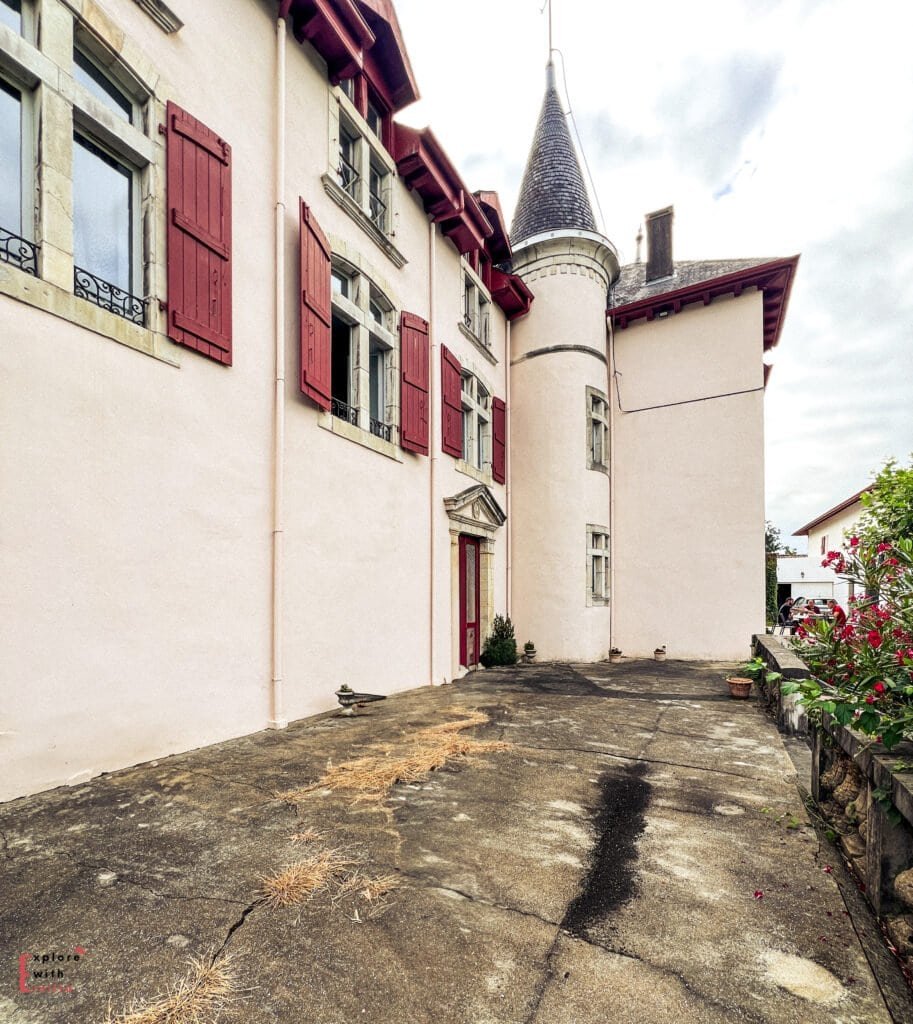
I chose to stay in Itxassou at Soubeleta Bed & Breakfast, which turned out to be an excellent decision. This 17th-century family property has been beautifully maintained with original features like chestnut wood floors and period furniture.
Itxassou is known for its cherries, and the surrounding mountains offer excellent hiking opportunities. I spent one morning hiking part of Mont Mondarrain and was rewarded with spectacular valley views.
The location worked perfectly – peaceful mountain surroundings but just 20 minutes from the beaches and Bayonne. During my drives, I spotted several pottoks, the small semi-wild horses that roam these mountains freely – a unique sight that feels distinctly Basque. Given that is less known, prices here are also a lot better.
Biarritz – The Pearl of the Basque Coast
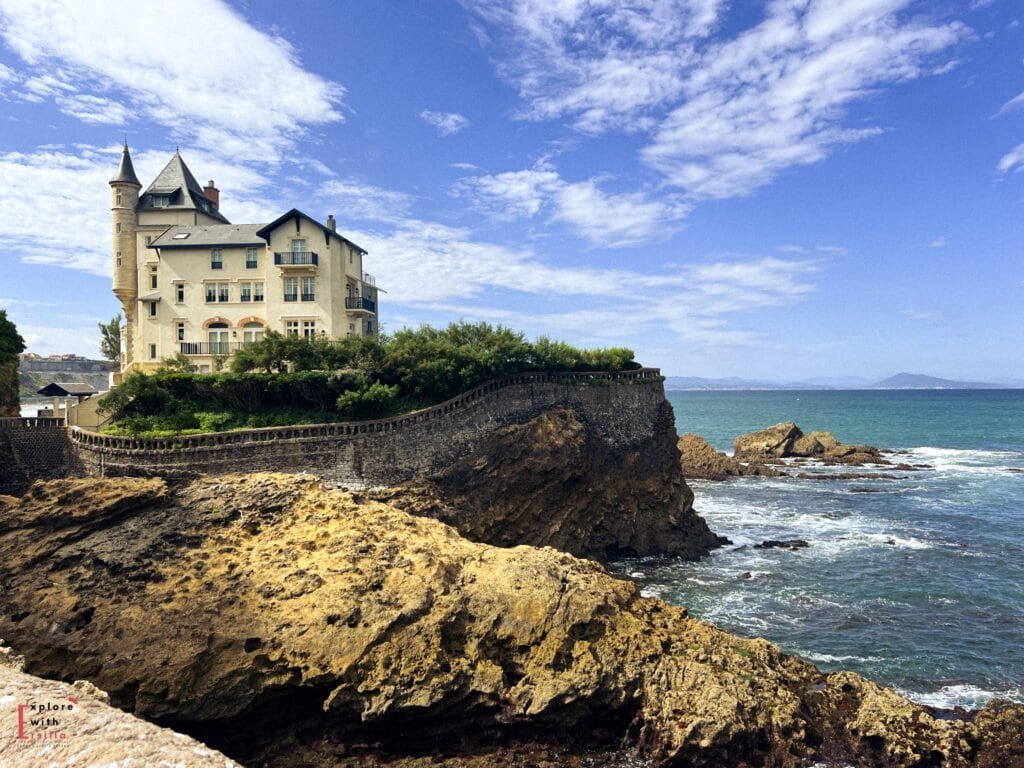
Biarritz stands out as the most glamorous destination in the Basque Country. Originally a whaling port, it transformed into an elegant resort town when Empress Eugénie (wife of Napoleon III) built a summer palace here in the 1850s. Today, it combines imperial grandeur with a laid-back surf culture that gives the city its unique character.

MY TOP HOTEL PICKS
ACTIVITIES I RECOMMEND
Impressive Architecture
The coastal architecture in Biarritz is remarkable, particularly the Belle Époque villas perched on the cliffs with panoramic sea views. Walking along the main promenade, you can spot the distinctive mix of Neo-Basque and Art Deco styles.
These imposing buildings serve as reminders of the town’s prestigious past.
Beyond the Main Beach
While Grande Plage is Biarritz’s best-known beach, I found it too crowded and opted instead for two excellent alternatives:
Plage du Port Vieux is a small, sheltered cove surrounded by dramatic cliffs. The calm waters make it suitable for swimming, unlike many of Biarritz’s surf-heavy beaches. I spent an afternoon here and had lunch at Eden Rock Café, where the views of Rocher de la Vierge were worth the visit alone.
Plage de la Côte des Basques became my regular spot with its expansive shoreline and fewer visitors. This beach is especially popular with surfers, and watching them navigate the Atlantic waves was entertaining even as a non-surfer.
Must-Visit Landmarks
The Biarritz lighthouse stands at the northern end of town and provides excellent panoramic views if you climb to the top. The 30-minute walk from the center is pleasant, taking you past some of the city’s most impressive properties.
On the southern end, Villa Belza is an imposing neo-medieval castle built directly on the rocky coast. Though privately owned, its exterior makes for dramatic photographs.
Rocher de la Vierge (Virgin Rock) is accessed via a footbridge engineered by Gustave Eiffel. The statue of the Virgin Mary overlooks the Bay of Biscay, and the views from this vantage point are among Biarritz’s most photographed.
Cultural Stops
The Aquarium of Biarritz, housed in an Art Deco building from 1933, is worth visiting particularly if traveling with children or on a rainy day. The building itself is as interesting as the marine exhibits inside.
Don’t leave Biarritz without trying gâteau basque, the region’s signature cake. I sampled the version at Maison Adam, which offers both cream and cherry-filled varieties. The cake’s simple appearance belies its perfect balance of textures – crisp exterior with a soft, rich filling.
For those interested in surfing, Biarritz offers numerous schools catering to all levels. Even as a complete beginner, I found the instructors patient and beaches like Côte des Basques ideal for learning.
Two to three days in Biarritz provides enough time to experience both its cultural highlights and beach atmosphere.
Saint-Jean-de-Luz – A Picturesque Fishing Port with Rich History
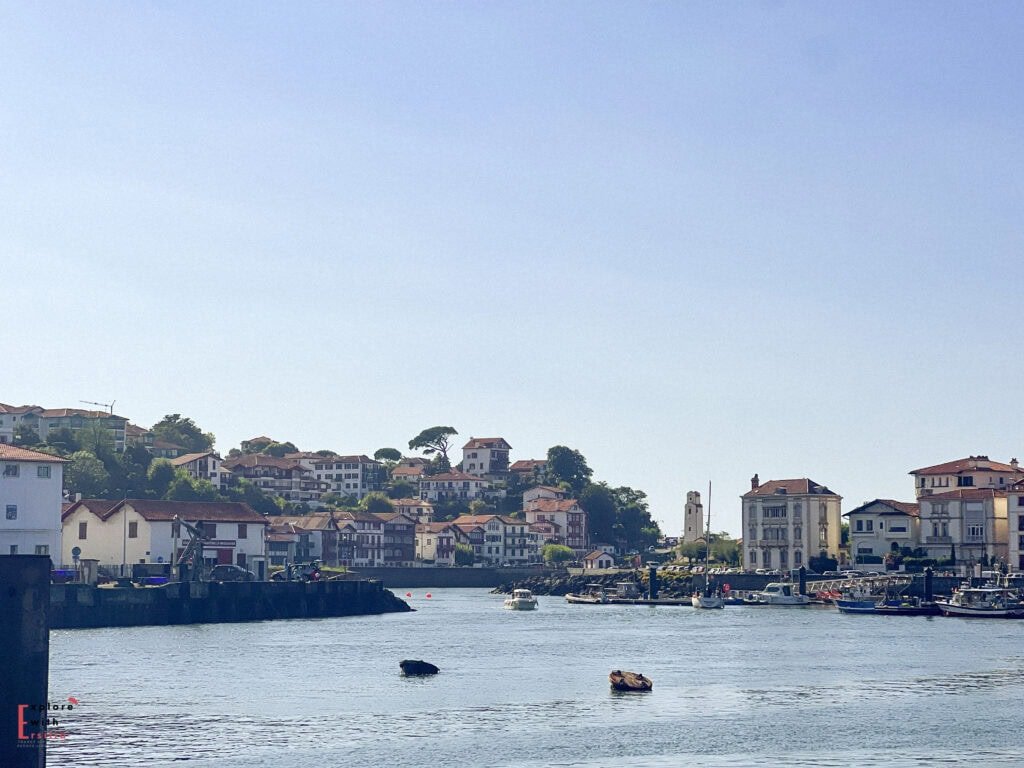
Saint-Jean-de-Luz offers a more authentic Basque experience than its glamorous neighbor Biarritz. This working fishing port has maintained its traditional character while still catering to visitors.
The town holds significant historical importance as the site where Louis XIV married Maria Teresa of Spain in 1660, an event that helped end the war between the two nations.

MY TOP HOTEL PICKS
ACTIVITIES I RECOMMEND
The Port and Town Center
The colorful harbor remains active with fishing boats bringing in daily catches. Early mornings are particularly interesting as fishermen unload their hauls. The town center features narrow streets lined with traditional Basque buildings – white facades with red or blue timber details and distinctive sloping roofs.
The Church of Saint John the Baptist, where the royal wedding took place, is worth visiting for its ornate wooden galleries and maritime-themed decor. The door through which the royal couple exited was sealed afterward, visible today as a bricked-up portal.
Colline Sainte Barbe
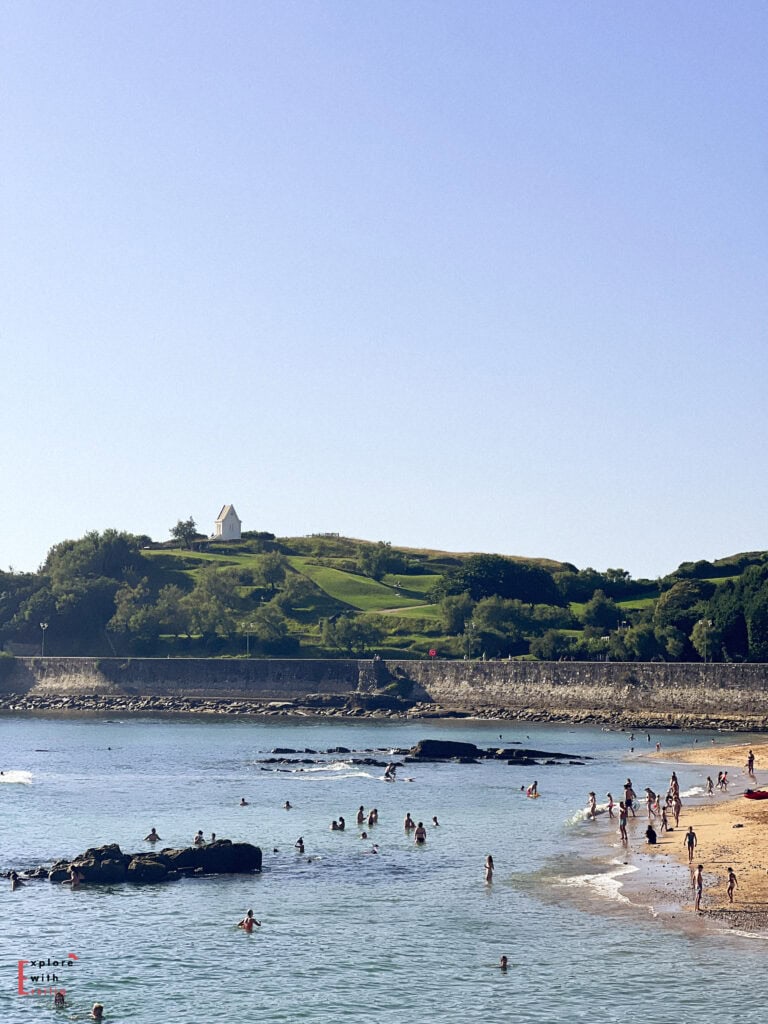
One of my favorite experiences was hiking to Colline Sainte Barbe. The 40-minute walk from the port takes you up a moderately steep path to a small chapel at the summit. The panoramic views from here are spectacular – the town and harbor on one side, the wild coastline extending toward Spain on the other, and the Pyrenees foothills forming a dramatic backdrop.
Morning visits provide the best light for photographs, though sunset creates dramatic silhouettes against the bay.
Basque Culinary Delights
Saint-Jean-de-Luz offers excellent opportunities to sample authentic Basque cuisine. The local bodegas serve traditional pintxos (the Basque version of tapas) in a casual atmosphere. I particularly enjoyed the combinations of Jambon de Bayonne with local goat cheese, enhanced with a touch of cherry jam.
For the best experience, visit the pintxos bars in the streets behind the port around 7-8 PM when they begin to fill with locals. Bar Txamara offered particularly good value and quality during my visit.
Beaches and Activities
The main beach, protected by a seawall, offers calmer swimming conditions than most Basque coast beaches. Its gradual slope makes it especially suitable for families with children.
The town is also known for its artisanal shopping, particularly Basque linens with their distinctive striped patterns. The workshop Linge Basque sells traditional textiles made using centuries-old techniques.
Saint-Jean-de-Luz makes an excellent base for exploring both the French Basque Country and crossing into Spain – San Sebastián is just 30 minutes away by car. This strategic location, combined with its more relaxed atmosphere, makes it my preferred place to stay when exploring the region.
Hendaye & The Spanish Border
Hendaye marks the southernmost point of the French Basque Coast, sitting literally at the border with Spain. This location gives it a unique cross-cultural atmosphere that distinguishes it from other towns in the region.
The architectural heritage here reflects its border status, with influences from both French and Spanish Basque styles

MY TOP HOTEL PICKS
ACTIVITIES I RECOMMEND
A Town of Two Countries
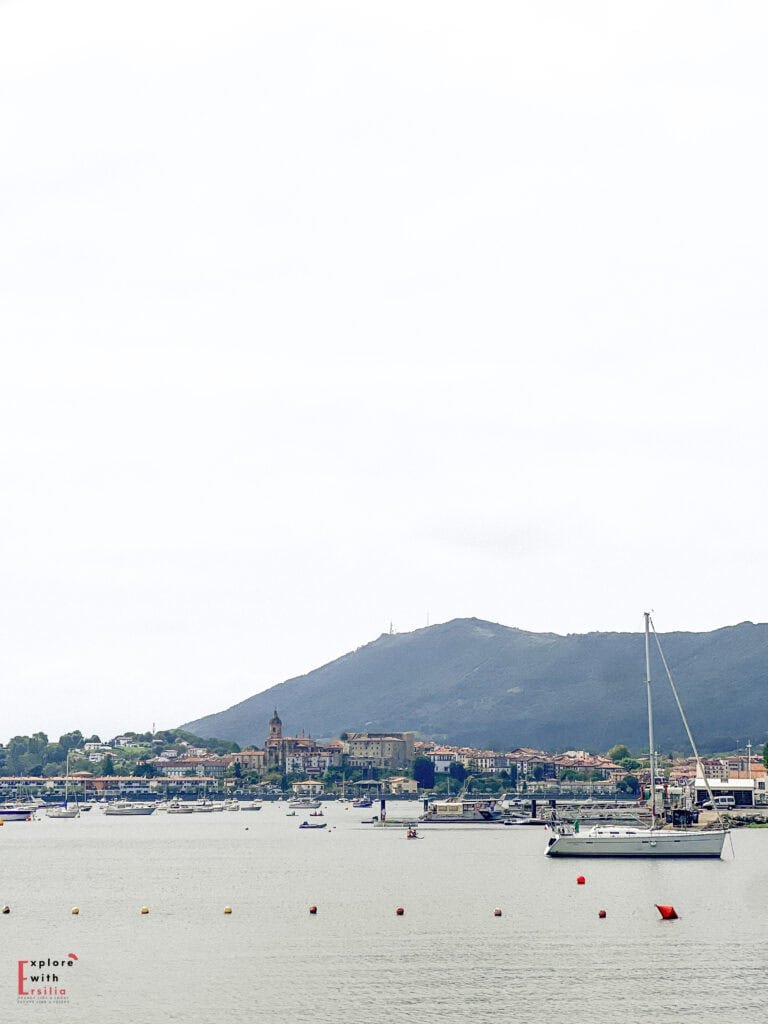
What makes Hendaye fascinating is how seamlessly the border experience works today. Spain is literally just across the water, and taking the ferry to Hondarribia takes only about 7 minutes – far faster than I expected. This makes cross-border day trips exceptionally easy.
The town itself has a relaxed character compared to busier destinations like Biarritz. Hendaye’s 3km beach is one of the longest on the Basque coast and notably less crowded, with gentle slopes that make it suitable for swimming.
From various points along the waterfront, you can enjoy views across the bay to Spain, with the distinctive profile of Mount Jaizkibel creating a dramatic backdrop. This perspective gives you a genuine sense of straddling two countries.
Beyond sightseeing, Hendaye offers practical benefits for travelers. Many locals cross regularly for shopping and dining, taking advantage of price differences for certain goods. Spanish restaurants in Hondarribia are particularly popular for their excellent value.
If you’re continuing into Spain, Hendaye serves as an excellent final stop in France, allowing you to gradually transition between the two countries while appreciating their subtle cultural distinctions.
Château d’Abbadia: A Scientific Castle
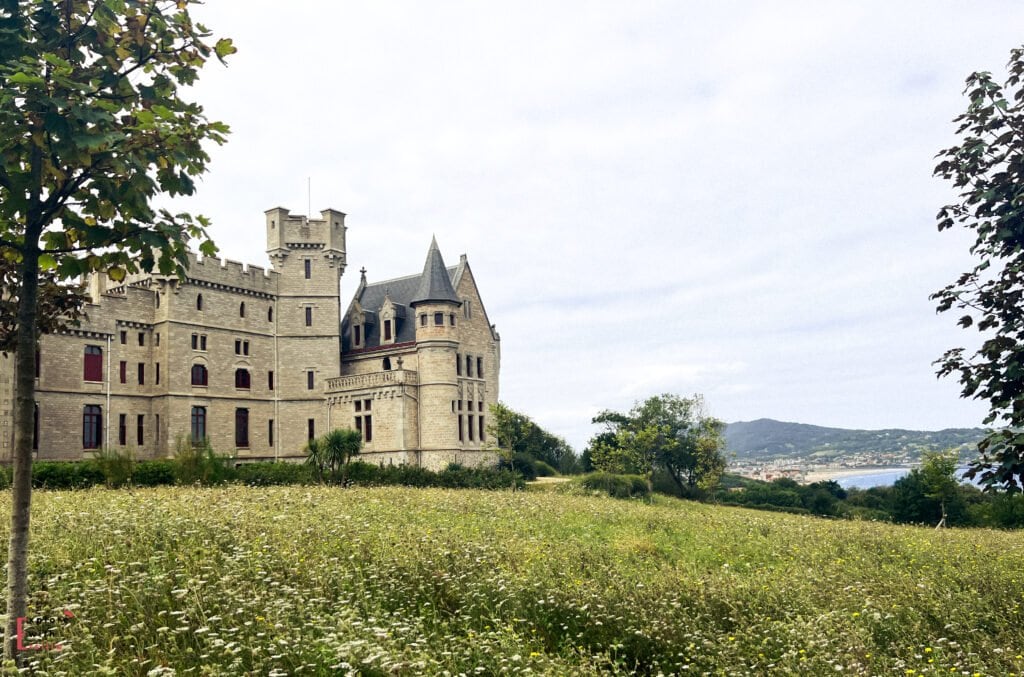
Château d’Abbadia was the highlight of my visit, located just outside Hendaye on the Basque Corniche. This Neo-Gothic castle was built between 1864 and 1884 by Viollet-Le-Duc (the same architect who restored Notre Dame in Paris) for Antoine d’Abbadie, a scientist and explorer.
What makes this castle unique is its purpose as an observatory. The main tower includes an opening in the ceiling designed specifically for stargazing with telescopes. This scientific heritage is evident throughout the building, with elements of d’Abbadie’s studies in ethnology, geography, and astronomy incorporated into the eclectic decoration.
From a practical standpoint, visiting requires some planning. Tickets must be booked in advance, and entry times are strictly enforced. I arrived 30 minutes early as recommended, which was fortunate because the walk from the parking area to the castle takes about 15-20 minutes along a scenic path. Despite attempts to find closer parking, this is indeed the only option.
The gardens surrounding the castle are worth exploring thoroughly. As you circle the building, the architectural perspective changes dramatically from different viewpoints. The ocean backdrop provides stunning photo opportunities, particularly in the late afternoon when the light is most flattering for photography.
Beyond the Coast – Day Trips to the Pyrenees Béarnaise
The French Basque Country offers more than just coastal experiences. Venturing inland to the Pyrenees Béarnaise provides a complete contrast to the seaside towns and a deeper understanding of the region’s diversity. The mountains here form a dramatic backdrop that becomes increasingly compelling the closer you get.
Mountain Landscapes Worth Exploring
The Cirque de Lescun was the most impressive natural formation I encountered during my trip. This massive amphitheater of limestone peaks creates a near-perfect circle of mountains, with the small village of Lescun nestled at its base. Several hiking trails of varying difficulty lead through alpine meadows with views that rival anything in the more famous Alps.
Pic du Midi d’Ossau stands out as the region’s most recognizable mountain. Its distinctive pyramidal shape is visible from numerous vantage points throughout the area. While climbing to its 2,884m summit requires serious mountaineering skills, several moderate trails circle its base, offering impressive views without technical difficulty.
Car-Free Exploration
I was particularly interested in exploring without a vehicle and discovered the “Sans Voiture” itinerary along the Béarn des Gaves. This 7-day route follows the mountain streams (gaves) that flow from the Pyrenees through picturesque towns and villages.
Salies-de-Béarn makes an excellent first stop, known for its salt springs and thermal baths. The old town centers around the salt source with distinctive architecture reflecting its prosperity from the “white gold” trade. The thermal baths offer a relaxing experience after traveling.
Further along the route, Sauveterre-de-Béarn sits dramatically on a rocky outcrop above the river. The remains of its medieval fortifications and the Romanesque church provide excellent photo opportunities, while the legends of the “Leap of the Queen” add historical intrigue to the visit.
Navarrenx, one of the first bastioned towns in France, maintains its 16th-century ramparts almost intact. Walking the complete circuit of walls provides an excellent overview of this remarkably preserved military architecture.
Cycling between these towns is straightforward, with well-marked routes that follow the rivers on mainly flat terrain. Bike rentals are available in larger towns, and trains accommodate bicycles for longer stretches.
Seasonal Considerations
Mountain weather varies significantly throughout the year. I visited in early June and found ideal conditions with clear skies, moderate temperatures, and wildflowers in bloom. July and August bring more crowds but reliable weather, while September offers beautiful autumn colors.
Winter visits (December-March) are possible but require more planning as some smaller villages have limited services, and mountain roads may close during snowfall.
The combination of coastal and mountain experiences creates a more complete understanding of the Basque region than staying exclusively by the sea. Even a single day in the Pyrenees adds valuable contrast to a Basque Country itinerary.
Basque Gastronomy – What to Eat on Your Roadtrip
Basque cuisine reflects both mountain and coastal influences, creating a distinctive regional food culture worth exploring during your visit.
Must-Try Specialties
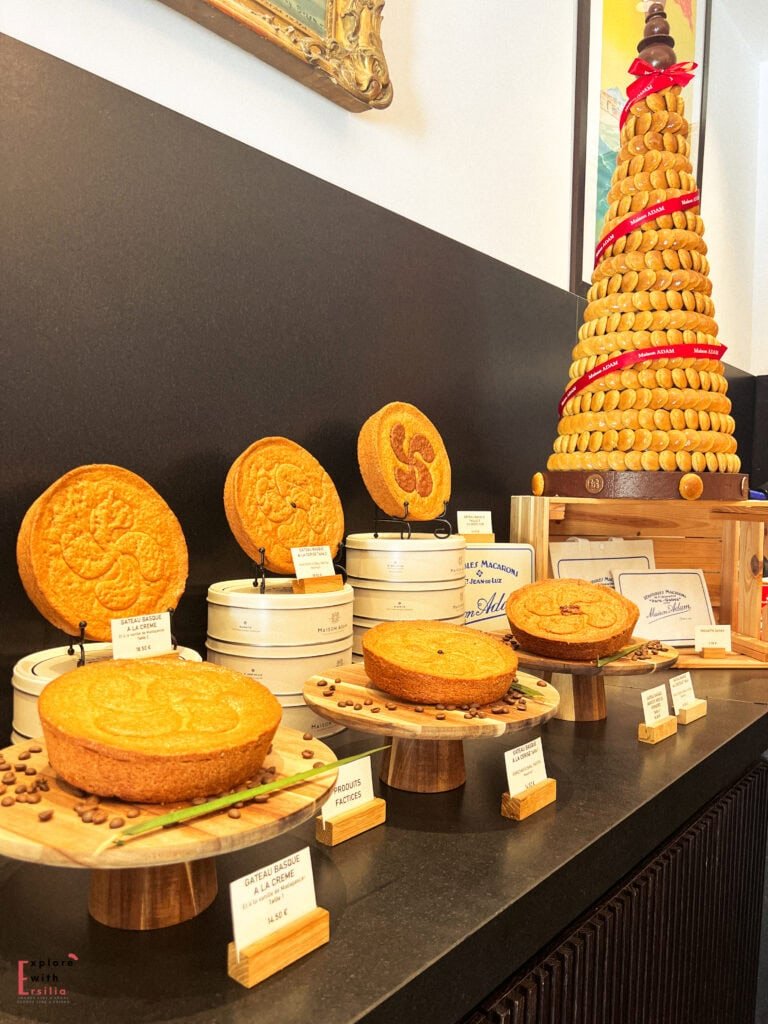
Gâteau Basque is a pie made of buttery crust filled with either black cherry jam or vanilla cream. The morning market in Saint-Jean-de-Luz offers the most authentic versions.
Piment d’Espelette adds depth to savory Basque dishes. In Espelette village, you can purchase this mild pepper in various forms.
Jambon de Bayonne, the region’s salt-cured ham, is best sampled at Bayonne’s covered market.
Ossau-Iraty sheep cheese from the mountains pairs traditionally with black cherry preserves.
Dining Experiences

Coastal towns serve excellent seafood, particularly ttoro (Basque fish stew) in Saint-Jean-de-Luz’s port restaurants.
Pintxos (Basque tapas) let you sample multiple flavors by visiting several bars in one evening. This is especially authentic in Bayonne’s Rue Port-Neuf.
Txakoli, a slightly fizzy white wine, accompanies seafood perfectly, while Irouléguy wines from the foothills offer robust options.
Bayonne’s chocolate tradition dates to the 17th century, with historic shops like Cazenave still serving exceptional hot chocolate worth seeking out.
Planning Your Perfect French Basque Country Itinerary
The French Basque Country works well for trips of various lengths, from quick weekends to extended explorations. Based on my experience, planning a balanced itinerary that combines coastal and mountain destinations provides the most satisfying experience.
Sample Itineraries
For a 3-day trip, focus on either the coast (Biarritz, Saint-Jean-de-Luz, and Bayonne) or the inland villages (Espelette, Ainhoa, and Saint-Jean-Pied-de-Port). Attempting both areas in such a short time leaves little opportunity to appreciate each location.
A 5-day trip allows for a more comprehensive experience: two days exploring coastal towns, one day in Bayonne, and two days in the mountain villages. This timeframe gives you enough flexibility to adjust plans based on weather conditions.
With 7 days, I recommend adding excursions to the Pyrenees Béarnaise region and potentially crossing into Spanish Basque Country for a day trip to San Sebastián or Hondarribia.
Seasonal Considerations
Each season offers distinct advantages. Spring (April-June) provides mild weather and wildflowers in the mountain villages without summer crowds. This is particularly pleasant for exploring Ainhoa and hiking in the foothills.
Summer (July-August) brings reliable beach weather but significantly higher visitor numbers and accommodation costs. Advance bookings become essential, especially in Biarritz and Saint-Jean-de-Luz.
Fall (September-October) offers excellent conditions for both coastal and mountain visits. The Espelette pepper harvest and festival make this a particularly rewarding time for food enthusiasts.
Winter (November-March) sees fewer tourists and lower prices. The coastal climate remains mild, though some mountain areas become less accessible. Bayonne’s chocolate shops feel especially appropriate during the cooler months.
Practical Considerations
When crossing into Spain, EU citizens need only an ID card, while non-EU visitors should carry their passport. The border crossings are straightforward with minimal delays.
The region accommodates various budgets. Coastal towns like Biarritz trend toward luxury, while inland villages and Bayonne offer more moderate options. For families, the calmer beaches of Saint-Jean-de-Luz and the aquarium in Biarritz are particularly suitable.
For adventure seekers, surfing opportunities exist along the entire coast, with hiking, paragliding, and mountain biking available inland. Cultural events occur throughout the year, with the most concentrated festival season running from June through September.
Regardless of your timeframe or interests, balancing coastal and mountain experiences provides the most complete understanding of what makes the French Basque Country unique.
Conclusion
The French Basque Country offers an extraordinary blend of coastal beauty, mountain majesty, and cultural richness that makes it one of France’s most rewarding roadtrip destinations.
From the vibrant streets of Bayonne to the red-pepper facades of Espelette, from the crashing waves of Biarritz to the peaceful mountain villages, this unique corner of France promises memories that will last a lifetime.
Whether you’re savoring pintxos in Saint-Jean-de-Luz, hiking in the Pyrenees, or simply soaking in the distinctive Basque architecture and atmosphere, you’ll discover why this region captivates the hearts of travelers who venture beyond France’s more famous destinations.
Pack your bags, brush up on a few Basque phrases, and prepare for an unforgettable journey through one of Europe’s most culturally distinct and naturally stunning regions!
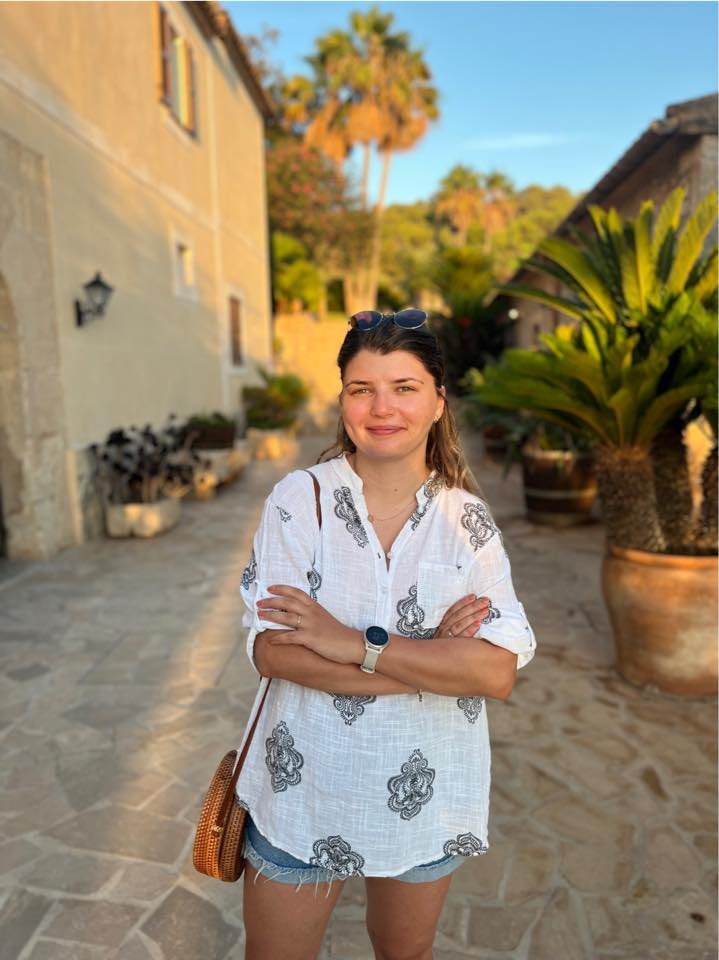
author page / EDITORIAL POLICY PAGE
Hi, I’m Ersilia

Toulouse, France

Originally from Romania

English & French Content
As a Romanian expat living in the heart of southern France, I guide English speakers to discover authentic French experiences without the language barrier. My unique perspective as both a local and an expat allows me to share insider tips, cultural insights, and practical advice that you won’t find in typical guidebooks.
My Expertise:
- French life and culture navigation
- Hidden gems across French regions
- Eastern vs Western European perspectives
- Local insights and practical travel tips
Blog Socials
Personal Pages







